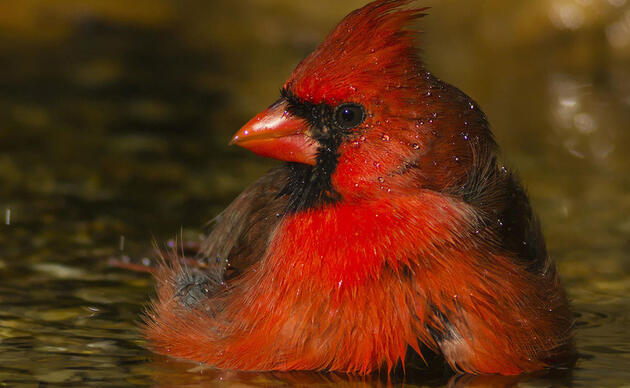A handful of flying seabirds caught the attention of Florida Fish and Wildlife Conservation Commission (FWC) Officer Lee Lawshe in early May while he was patrolling Matanzas Wildlife Management Area. He recognized the birds as Least Terns, a State-designated Threatened species, and quickly realized they were nesting nearby. The terns were using a flat, sandy, open area within a Florida Inland Navigation District "spoil" site for their nesting. Officer Lawshe informed Lieutenant Steve Zukowsky about the colony, who in turn reached out to FWC's biologists in the region, Alex Kropp and Anna Deyle.
Within hours, people were working to protect the new colony.
Late spring through summer is a busy time for biologists who work along the coast - it's beach-nesting bird season. Unfortunately, many of our sea and shorebirds are facing tough times. Coastal habitats are increasingly lost to development or are transformed by dredging, beach renourishment, and other activities. To make matters worse, nesting birds are raising their families on the same beautiful beaches where people want to recreate with their families. To help reverse population declines in coastal bird species like the Least Tern, Audubon staff and volunteers work through “shorebird partnerships” with FWC and other organizations to manage and protect the birds where they choose to nest each year.
Anna Deyle organized a team consisting of FWC staff (Mark Rivadeneyra, Chris Angel, and Heather Hillard) and Chris Farrell, Audubon’s Northeast Florida Policy Associate, to visit the site. The team installed symbolic fencing and signage (provided by St. Johns County) around the nesting tern colony and along a stretch of land leading to the colony from the sandy shores of the adjacent Matanzas River. It was a large area to post, but experience and teamwork helped the work go quickly. Fencing a buffered area around beach-nesting birds protects the eggs and chicks from accidental harm by unknowing beachgoers and also provides an opportunity for people to learn that some birds don’t nest in trees – they lay their eggs right on the bare sand!
The threat to sea and shorebirds is real and immediate, but dedication and collaboration through regional shorebird partnerships can produce meaningful results. Thanks to Officer Lawshe's knowledge and observations, and the quick response of FWC and Audubon Florida, 34 Least Tern nests and two Wilson’s Plover nests were found, surveyed, and posted within just a few days.
By Jonathan Webber
Stay in Touch!
Show your love of birds today. Subscribe to receive email updates about Audubon's conservation work and hear about opportunities to help birds in your area or nationwide.




